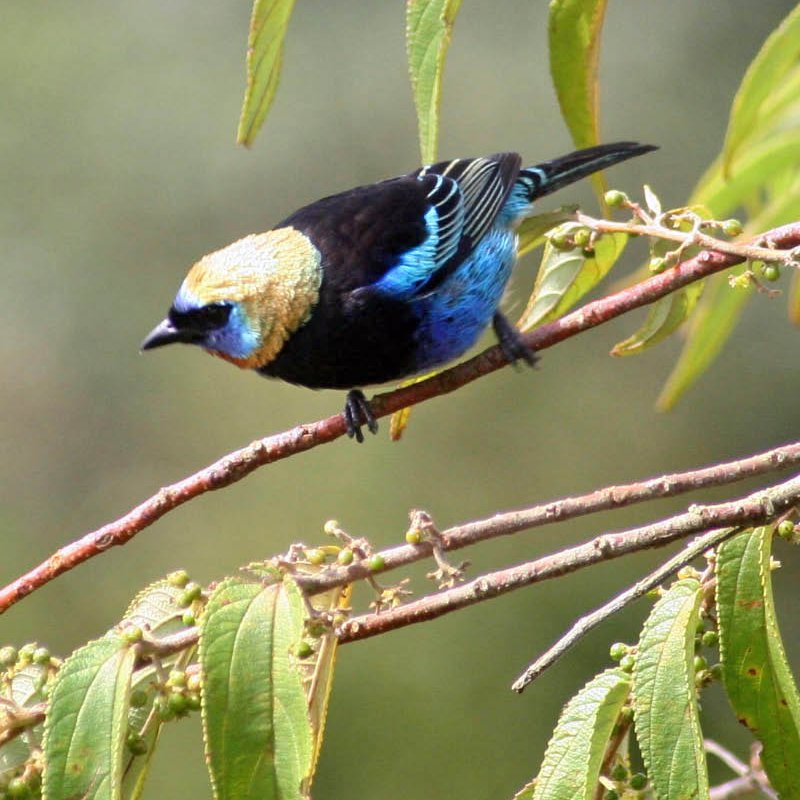- Golden-hooded Tanager
Taxobox
name = Golden-hooded Tanager

image_width = 220px
image_caption = Adult. Sexes are similar.
status = LC
status_system = iucn3.1
regnum =Animalia
phylum =Chordata
classis =Aves
infraclassis =Neognathae
ordo =Passeriformes
familia =Thraupidae
genus = "Tangara"
species = "T. larvata"
binomial = "Tangara larvata"
binomial_authority = (Du Bus de Gisignies,1846 )The Golden-hooded Tanager, "Tangara larvata", is a medium-sized
passerine bird . Thistanager is a resident breeder from southernMexico south to westernEcuador .Adult Golden-hooded Tanagers are 13 cm long and weigh 19 g. The adult male has a golden head with a black eyemask edged with violet blue above and below. The upperparts of the body are black apart from the turquoise shoulders, rump and edgings of the wings and tail. The flanks are blue and the central belly is white. Females have a greenish tinge to the head, sometimes with black speckling on the crown, and more extensively white underparts. Immatures are duller, with a green head, dark grey upperparts, off-white underparts, and little blue in the plumage.
The Golden-hooded Tanager’s call is a sharp "tsit" and the song is a tuneless rattled series of "tick" sounds.
It resides from sea level to 1500 m altitude in the canopy of dense forests and semi-open areas like clearings, second growth and well-vegetated gardens.
Golden-hooded Tanagers occur in pairs, family groups, or as part of a
mixed-species feeding flock . They eat certain smallfruit [E.g. of "Trophis racemosa " (Moraceae ): Foster (2007)] , usually swallowed whole, andinsect s are also taken.The cup nest is built in a tree fork or in a bunch of green
banana s, and the normal clutch is two brown-blotched white eggs. This species is often double-brooded, and the young birds from the first clutch assist with feeding the second brood of chicks.Footnotes
References
*|year=2004|id=53913|title=Tangara larvata|downloaded=12 May 2006 Database entry includes justification for why this species is of least concern
* (2007): The potential of fruiting trees to enhance converted habitats for migrating birds in southern Mexico. "Bird Conservation International" 17(1): 45-61. doi|10.1017/S0959270906000554 [http://journals.cambridge.org/production/action/cjoGetFulltext?fulltextid=936412 PDF fulltext]
* (1989): "A guide to the birds of Costa Rica". Comistock, Ithaca. ISBN 0-8014-9600-4
Wikimedia Foundation. 2010.
